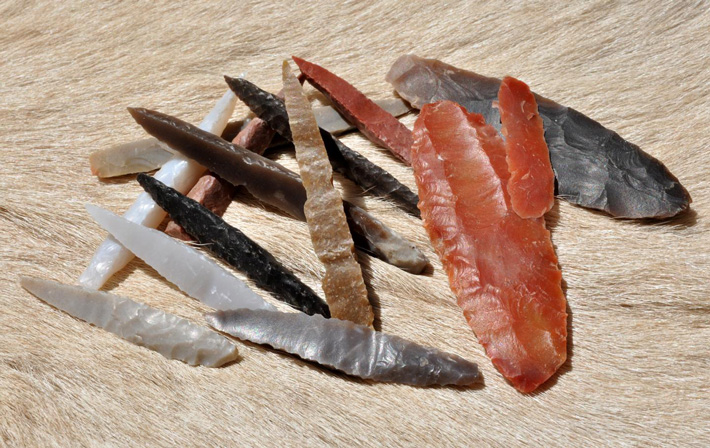8,000 years old Fluted Stone Tools Found in Southern Arabia
Cosmos Magazine reports that 8,000-year-old fluted arrowheads have been uncovered in Yemen and in Oman.

Chipping off flakes from stone to shape it is a highly skilled process that had been previously thought to be limited to toolmakers who lived in North America between 13,000 and 10,000 years ago
Throughout southern Arabia, neolithic toolmakers have developed complex stone weapons designed to be practical and to demonstrate their artistic skills.
About 8,000 years ago spearheads and arrowheads were created using fluting, a process first used in North America thousands of years earlier – but there was a difference.
In North America, almost all fluting on projectile points was done near the base, so the implementation could be attached with string to the arrow or spear shaft. However, some Arabian points had fluting that appeared to have no practical purpose, such as near the tip.
“Of course, we can’t say for sure, but we think this was a way for skilled toolmakers to signal something to others, perhaps that one is a good hunter… or dexterous with one’s hands,” says anthropologist Joy McCorriston from Ohio State University (OSU), US, co-author of a paper in the journal PLOS ONE.
“It showed one was good at what one did. This could improve one’s social standing in the community.”
Researchers from the French National Centre for Scientific Research (CNRS), the Max Planck Institute for the Science of Human History in Germany, and OSU studied projectile points from two archaeological sites: Manayzah, in Yemen, and Ad-Dahariz, in Oman.
Finding fluted points outside of North America was an important discovery, said CNRS’s Rémy Crassard, the study’s lead author.
“These fluted points were, until recently, unknown elsewhere on the planet,” he says. “This was until the early 2000s, when the first isolated examples of these objects were recognized in Yemen, and more recently in Oman.”
The discovery provides one of the best examples of “independent invention” across continents, says Michael Petraglia, from the Max Planck Institute.
“Given their age, and the fact that the fluted points from America and Arabia are separated by thousands of kilometers, there is no possible cultural connection between them,” he says.
“This is a clear and excellent example of cultural convergence, or independent invention, in human history.”
Fluting involves a highly skilled process of chipping off flakes from stone to create a distinctive channel.
As part of their study, the researchers had a master technician in flintknapping – the shaping of stones – attempt to create projectile points in a way similar to how researchers believe the ancient Arabians did.
“He made hundreds of attempts to learn how to do this. It is difficult and a flintknapper breaks a lot of these points trying to learn how to do it right,” McCorriston says.
